 With what's been coming hot off the press regarding our dear, child to sex siren, actress Lindsay Lohan's beautiful pictorial début in Playboy:
BEHOLD an "In the news with Lindsay Lohan" montage!
Here's the wanna be Rock 'n Rolla, yet, not so song birds skinny on the lately...
Lindsay Lohan’s "Marilyn Monroe-Inspired" Playboy Pictorial To Run in Jan Issue
ORIGINAL SHOOT - Hef Did Not Approve...a reshoot was ordered, rightly so, Hugh is THE MAN for good reason. Although it's not hard to see this first shoot was executed terribly.
With what's been coming hot off the press regarding our dear, child to sex siren, actress Lindsay Lohan's beautiful pictorial début in Playboy:
BEHOLD an "In the news with Lindsay Lohan" montage!
Here's the wanna be Rock 'n Rolla, yet, not so song birds skinny on the lately...
Lindsay Lohan’s "Marilyn Monroe-Inspired" Playboy Pictorial To Run in Jan Issue
ORIGINAL SHOOT - Hef Did Not Approve...a reshoot was ordered, rightly so, Hugh is THE MAN for good reason. Although it's not hard to see this first shoot was executed terribly.












 Not a bad remake, Ms. Lohan. The originator Ms. Marilyn Monroe~
Not a bad remake, Ms. Lohan. The originator Ms. Marilyn Monroe~
 Lindsay Lohan has caused so many heads to spin, someone thought it obligatory to bestow a strain unto her amazing beguiling character.
Wednesday, October 12, 2011
source:http://thechronic-le.blogspot.com/2011/10/medical-marijuana-strain-review-lindsay.html
Medical Marijuana Strain Review: Lindsay Lohan
Overview: I guess it was just a matter of time before America's #1 skank Linday Lohan got her own medical marijuana strain, unfortunately, much like the actual person, it is a bit of a disappointment.
Lindsay Lohan has caused so many heads to spin, someone thought it obligatory to bestow a strain unto her amazing beguiling character.
Wednesday, October 12, 2011
source:http://thechronic-le.blogspot.com/2011/10/medical-marijuana-strain-review-lindsay.html
Medical Marijuana Strain Review: Lindsay Lohan
Overview: I guess it was just a matter of time before America's #1 skank Linday Lohan got her own medical marijuana strain, unfortunately, much like the actual person, it is a bit of a disappointment.
 Looks: Lindsay Lohan is a beautiful strain with short, stubby and super dense light green leaves that are covered in a light frost and plenty of rust-colored hairs that come tangling out of the buds.
Taste/Smell: The taste was a little bit hashy and a little bit spicy. Not really a strong flavor here, but not entirely unpleasant.
Buzz: Lindsay Lohan has the looks and a fairly decent taste, but the buzz is where it falls short. It made me super lethargic and sleepy. I wasn't good for anything for the rest of the day. Not only did these buds shut my body down, but my mind was also slowed down which is unusual for me because weed usually gets my creative juices flowing and gets me thinking. This strain might be good for insomniacs looking for relief, but I probably wouldn't recommend it for any other medical uses and I have a feeling it could make the symptoms of depression even worse.
Overall Grade: C-
[youtube http://www.youtube.com/watch?v=_i5uCL5uZaQ&w=560&h=315]
No word has been confirmed as to whether or not Lindsay has penned the possible penis pleaser....
To be continued.
WE love you Lindsay!
Looks: Lindsay Lohan is a beautiful strain with short, stubby and super dense light green leaves that are covered in a light frost and plenty of rust-colored hairs that come tangling out of the buds.
Taste/Smell: The taste was a little bit hashy and a little bit spicy. Not really a strong flavor here, but not entirely unpleasant.
Buzz: Lindsay Lohan has the looks and a fairly decent taste, but the buzz is where it falls short. It made me super lethargic and sleepy. I wasn't good for anything for the rest of the day. Not only did these buds shut my body down, but my mind was also slowed down which is unusual for me because weed usually gets my creative juices flowing and gets me thinking. This strain might be good for insomniacs looking for relief, but I probably wouldn't recommend it for any other medical uses and I have a feeling it could make the symptoms of depression even worse.
Overall Grade: C-
[youtube http://www.youtube.com/watch?v=_i5uCL5uZaQ&w=560&h=315]
No word has been confirmed as to whether or not Lindsay has penned the possible penis pleaser....
To be continued.
WE love you Lindsay!
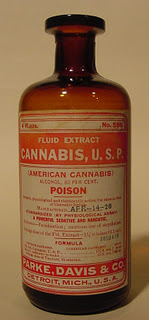 Have you heard of the Eli Lilly the well-known pharmaceutical company? They are the manufacturer of some well known medicines that you have probably heard of - Prozac, Cialis, Zyprexa, Methadone and many many more. The photo below is of a Cannabis "tincture" produced by this company in the 1900's.
The photo above is from Parke-Davis, a subsidiary of the pharmaceutical company Pfizer. Pfizer marketed the first widely available treatment for epilepsey (Dilantin), they also developed the first bacterial vaccine, and were one of the first companies contracted to manufature the Salk vaccine used to eradicate polio.
Have you heard of the Eli Lilly the well-known pharmaceutical company? They are the manufacturer of some well known medicines that you have probably heard of - Prozac, Cialis, Zyprexa, Methadone and many many more. The photo below is of a Cannabis "tincture" produced by this company in the 1900's.
The photo above is from Parke-Davis, a subsidiary of the pharmaceutical company Pfizer. Pfizer marketed the first widely available treatment for epilepsey (Dilantin), they also developed the first bacterial vaccine, and were one of the first companies contracted to manufature the Salk vaccine used to eradicate polio.
 Learn more history and see more photos at the antique cannabis website.
Learn more history and see more photos at the antique cannabis website.
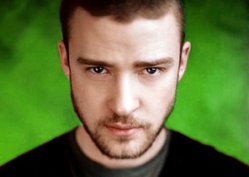 By Jeremiah Vandermeer, Cannabis Culture - Tuesday, June 14 2011
CANNABIS CULTURE - JT loves his MJ: Teenie-pop sensation turned rising Hollywood star Justin Timberlake says he is "absolutely" a pot smoker, and that "some people are just better high."
In a recent interview with Playboy, the former 'N Sync frontman couldn't have been more upfront:
PLAYBOY: You’ve talked openly about using drugs, smoking marijuana. Are you still a pot smoker?
TIMBERLAKE: Absolutely.
PLAYBOY: Is it a creativity booster? I read you were stoned for much of the time you made Justified.
TIMBERLAKE: The only thing pot does for me is it gets me to stop thinking. Sometimes I have a brain that needs to be turned off. Some people are just better high.
It's an interesting interview, and JT seems like a pretty cool guy. Hollywood seems to think so too: JT is playing starring roles in the upcoming Bad Teacher, Friends with Benefits and other films.
This isn't the first time JT has talked about his herb-smoking habits. I thought he looked baked on that episode of Punk'd!
I was starting to wonder if Timberlake had been hot-boxing the studio with the boys from The Lonely Island after seeing these hilarious collabo music videos from Saturday Night Live. I've been getting high and watching these for a month:
Dick in a Box
http://www.hulu.com/embed/JwB8oTlBc_BndPOX5NpuHw
Motherlover (feat. Justin Timberlake)
[youtube http://www.youtube.com/watch?v=X0DeIqJm4vM&w=560&h=315]
3-Way (The Golden Rule) (feat. Justin Timberlake & Lady Gaga)
[youtube http://www.youtube.com/watch?v=Pi7gwX7rjOw&w=560&h=315]
The guys from The Lonely Island - Andy Samberg, Akiva Schaffer and Jorma Taccone – feature Snoop Dogg on the title track of their new album, Turtleneck and Chain, and just told MTV what they learned while hangin with the Doggfather:
"Weird thing about Snoop, we found out: Snoop doesn't smoke weed," Taccone said.
"Yeah, he doesn't smoke weed," Samberg picked up. "He smokes weeeeeeeed. He smokes weeeeeeeed. He does not smoke weed."
Jeremiah Vandermeer is editor of Cannabis Culture. Follow him on Facebook and Twitter.
By Jeremiah Vandermeer, Cannabis Culture - Tuesday, June 14 2011
CANNABIS CULTURE - JT loves his MJ: Teenie-pop sensation turned rising Hollywood star Justin Timberlake says he is "absolutely" a pot smoker, and that "some people are just better high."
In a recent interview with Playboy, the former 'N Sync frontman couldn't have been more upfront:
PLAYBOY: You’ve talked openly about using drugs, smoking marijuana. Are you still a pot smoker?
TIMBERLAKE: Absolutely.
PLAYBOY: Is it a creativity booster? I read you were stoned for much of the time you made Justified.
TIMBERLAKE: The only thing pot does for me is it gets me to stop thinking. Sometimes I have a brain that needs to be turned off. Some people are just better high.
It's an interesting interview, and JT seems like a pretty cool guy. Hollywood seems to think so too: JT is playing starring roles in the upcoming Bad Teacher, Friends with Benefits and other films.
This isn't the first time JT has talked about his herb-smoking habits. I thought he looked baked on that episode of Punk'd!
I was starting to wonder if Timberlake had been hot-boxing the studio with the boys from The Lonely Island after seeing these hilarious collabo music videos from Saturday Night Live. I've been getting high and watching these for a month:
Dick in a Box
http://www.hulu.com/embed/JwB8oTlBc_BndPOX5NpuHw
Motherlover (feat. Justin Timberlake)
[youtube http://www.youtube.com/watch?v=X0DeIqJm4vM&w=560&h=315]
3-Way (The Golden Rule) (feat. Justin Timberlake & Lady Gaga)
[youtube http://www.youtube.com/watch?v=Pi7gwX7rjOw&w=560&h=315]
The guys from The Lonely Island - Andy Samberg, Akiva Schaffer and Jorma Taccone – feature Snoop Dogg on the title track of their new album, Turtleneck and Chain, and just told MTV what they learned while hangin with the Doggfather:
"Weird thing about Snoop, we found out: Snoop doesn't smoke weed," Taccone said.
"Yeah, he doesn't smoke weed," Samberg picked up. "He smokes weeeeeeeed. He smokes weeeeeeeed. He does not smoke weed."
Jeremiah Vandermeer is editor of Cannabis Culture. Follow him on Facebook and Twitter.
 The Pineal Gland or the 'Seat of the Soul' as described by Rene Descartes, is the focal point of our spiritual guiding system which makes us go beyond the five senses of rationality and become multisensory, tuned into and aware of higher dimensions of consciousness within a holographic cosmos. Cannabis or Marijuana among other psychedelics facilitates the activation of the pineal gland and helps turn on the third eye or the mind's eye directing our spiritual evolution to wholeness.
Here is an article by Chris Bennett on Cannabis & the Power of the Pineal Gland ...
Pineal Power
The Pineal Gland or the 'Seat of the Soul' as described by Rene Descartes, is the focal point of our spiritual guiding system which makes us go beyond the five senses of rationality and become multisensory, tuned into and aware of higher dimensions of consciousness within a holographic cosmos. Cannabis or Marijuana among other psychedelics facilitates the activation of the pineal gland and helps turn on the third eye or the mind's eye directing our spiritual evolution to wholeness.
Here is an article by Chris Bennett on Cannabis & the Power of the Pineal Gland ...
Pineal Power
 ((( The Pineal Gland is the Key to Psychedelic Enlightenment )))
The pineal gland, located in the centre of the brain, is about a quarter of an inch in size, reddish-gray, and weighs about one-tenth of a gram. Unlike other parts of the brain which come in pairs, the pineal gland is singular. Its location in the center of the brain and presence in other species indicates it is an older part of humanity's evolutionary brain system.
The pineal gland is present in all lower vertebrae. In other species, like birds, reptiles and frogs, the pineal gland is called the parietal eye or "third-eye" as its functions closely resemble that of an actual eye. In these other species, the pineal gland has components of an actual eye, with a cornea, rod and cone. It is considered to be the vestige of a functional sense organ of early primitive vertebrates.
Directly affected by the light taken in through the eyes, the pineal regulates sleep, menstrual cycles, mating seasons, hibernation, seasonal flight patterns and many other "instinctual" behaviors.
[youtube http://www.youtube.com/watch?v=twm1cAEWb8w&w=420&h=315]
Tryptamine Trippiness
Psychedelic researcher Dr Rick Strassman has explained how the pineal gland "is quite active in synthesizing compounds related to serotonin, an important neurotransmitter in the brain. Neurotransmitters are the chemical messengers allowing communication among individual nerve cells. Most typical psychedelic drugs, such as LSD, mescaline, psilocybin, and DMT are active in brain sites which are also affected by serotonin. In addition, most of these drugs are similar in their chemical structure to serotonin."
Strassman states that most of the above substances belong to the "tryptamine" class of drugs, and proposed that the pineal gland produces "one or two endogenous tryptamines found in human blood and cerebrospinal fluid. This latter fluid continually bathes the brain, and compounds found in it most likely affect brain function."
Strassman also explains how "psychedelic drugs, meditational states, spontaneous near-death experiences and other phenomena which may induce stereotypic death/rebirth and paradisal/hellish states act via the pineal gland.
Lyttle points to the universal mystic vision of God as an all-consuming white light, and postulates that on a physiological level, this experience is produced from chemical reactions in the pineal gland which is extremely light sensitive. "Light, the eyes and the 'third eye' or pineal gland form a triad which directly controls and regulates normal or altered consciousness and many bodily functions? these three factors are also directly related to, or implicated in, mystical states and the 'psychedelic' experience."
Visions of white light are not only associated with mysticism and psychedelic explorations, but are also a prevalent image recorded by those who experience the near-death state. A reason for this recurring theme in near-death states may be found with Dr Strassman, who suggests that after death, as the pineal gland shuts down, some of the chemical present in it may turn into "psychedelic" drugs!
According to Dr Strassman, the pineal gland may not only play an important role in death, but also in birth, possibly even in rebirth...
The pineal gland first becomes visible in the human fetus at the same time as does the clear differentiation of the fetus into female or male gender. The time for both of these events is 49 days, the period of time that, according to several Buddhist texts, the life force of a deceased individual coalesces around its next corporeal existence. If the life force does indeed enter through the pineal, the manifestation of this coming and going would be the release of psychedelic tryptamines, which would mediate the visionary experiences associated with near-death, and near-birth states.
Spiritual Traditions
Certain initiatory cults, such as Tantrism, Kundalini and Gnosticism, acknowledged the role of the pineal gland in the spiritual process. The spiritual/instinctual life force was seen as a serpent, due to its physical structure extending from the genitals, through the spine and up into its single all-seeing eye in the pineal gland.
These spiritual systems focussed around the raising of this primordial serpentine energy, based in the genitals and at the core of the pro-creative process. Through certain yogic practices this energy can be reversed and forced to travel up the spine into the brain, where it is reputed to cause "enlightenment".
In the Kundalini system, which has seven distinct energy centers, the pineal gland has been variously identified with the "Ajna Chakra" and alternatively the "Sahasrara Chakra". Both pre-Christian Mithraic and second century Gnostic texts also distinctly refer to the pineal gland in relation to seven distinct energy centers and this serpentine energy.
Not surprisingly, a common experience of those who have successfully raised their kundalini is the vision of all-consuming white light. More importantly, the devotee who successfully raises the kundalini experiences a radical switch in consciousness, obliterating the sense of individuation, and enters Nirvana.
Another potential reference to this curious little gland may occur at the end of the New Testament book of Revelation, where we find that the elect will know God intimately, "his name will be in their foreheads," which is where the pineal deeply lies. Noting the gland's strong connection with light, the rest of the passage is interesting: "There will be no more night; they will not need the light of a lamp or the light of the sun, for the Lord God will give them light."
Likewise in the Qabalistic tradition, the primordial archetypical man, Adam Kadmon, shines forth with a light from his forehead that was rich in complex patterns and linguistic symbols. Similar imagery occurs in the Persian tradition of the light-like sacred fluid, the "vivifying and spermatic" xvarenah. "Ahura Mazda is preeminently the possessor of xvarenah, but this 'flame' also springs from the forehead of Mithra and like a solar light emanates from the heads of sovereigns."
((( The Pineal Gland is the Key to Psychedelic Enlightenment )))
The pineal gland, located in the centre of the brain, is about a quarter of an inch in size, reddish-gray, and weighs about one-tenth of a gram. Unlike other parts of the brain which come in pairs, the pineal gland is singular. Its location in the center of the brain and presence in other species indicates it is an older part of humanity's evolutionary brain system.
The pineal gland is present in all lower vertebrae. In other species, like birds, reptiles and frogs, the pineal gland is called the parietal eye or "third-eye" as its functions closely resemble that of an actual eye. In these other species, the pineal gland has components of an actual eye, with a cornea, rod and cone. It is considered to be the vestige of a functional sense organ of early primitive vertebrates.
Directly affected by the light taken in through the eyes, the pineal regulates sleep, menstrual cycles, mating seasons, hibernation, seasonal flight patterns and many other "instinctual" behaviors.
[youtube http://www.youtube.com/watch?v=twm1cAEWb8w&w=420&h=315]
Tryptamine Trippiness
Psychedelic researcher Dr Rick Strassman has explained how the pineal gland "is quite active in synthesizing compounds related to serotonin, an important neurotransmitter in the brain. Neurotransmitters are the chemical messengers allowing communication among individual nerve cells. Most typical psychedelic drugs, such as LSD, mescaline, psilocybin, and DMT are active in brain sites which are also affected by serotonin. In addition, most of these drugs are similar in their chemical structure to serotonin."
Strassman states that most of the above substances belong to the "tryptamine" class of drugs, and proposed that the pineal gland produces "one or two endogenous tryptamines found in human blood and cerebrospinal fluid. This latter fluid continually bathes the brain, and compounds found in it most likely affect brain function."
Strassman also explains how "psychedelic drugs, meditational states, spontaneous near-death experiences and other phenomena which may induce stereotypic death/rebirth and paradisal/hellish states act via the pineal gland.
Lyttle points to the universal mystic vision of God as an all-consuming white light, and postulates that on a physiological level, this experience is produced from chemical reactions in the pineal gland which is extremely light sensitive. "Light, the eyes and the 'third eye' or pineal gland form a triad which directly controls and regulates normal or altered consciousness and many bodily functions? these three factors are also directly related to, or implicated in, mystical states and the 'psychedelic' experience."
Visions of white light are not only associated with mysticism and psychedelic explorations, but are also a prevalent image recorded by those who experience the near-death state. A reason for this recurring theme in near-death states may be found with Dr Strassman, who suggests that after death, as the pineal gland shuts down, some of the chemical present in it may turn into "psychedelic" drugs!
According to Dr Strassman, the pineal gland may not only play an important role in death, but also in birth, possibly even in rebirth...
The pineal gland first becomes visible in the human fetus at the same time as does the clear differentiation of the fetus into female or male gender. The time for both of these events is 49 days, the period of time that, according to several Buddhist texts, the life force of a deceased individual coalesces around its next corporeal existence. If the life force does indeed enter through the pineal, the manifestation of this coming and going would be the release of psychedelic tryptamines, which would mediate the visionary experiences associated with near-death, and near-birth states.
Spiritual Traditions
Certain initiatory cults, such as Tantrism, Kundalini and Gnosticism, acknowledged the role of the pineal gland in the spiritual process. The spiritual/instinctual life force was seen as a serpent, due to its physical structure extending from the genitals, through the spine and up into its single all-seeing eye in the pineal gland.
These spiritual systems focussed around the raising of this primordial serpentine energy, based in the genitals and at the core of the pro-creative process. Through certain yogic practices this energy can be reversed and forced to travel up the spine into the brain, where it is reputed to cause "enlightenment".
In the Kundalini system, which has seven distinct energy centers, the pineal gland has been variously identified with the "Ajna Chakra" and alternatively the "Sahasrara Chakra". Both pre-Christian Mithraic and second century Gnostic texts also distinctly refer to the pineal gland in relation to seven distinct energy centers and this serpentine energy.
Not surprisingly, a common experience of those who have successfully raised their kundalini is the vision of all-consuming white light. More importantly, the devotee who successfully raises the kundalini experiences a radical switch in consciousness, obliterating the sense of individuation, and enters Nirvana.
Another potential reference to this curious little gland may occur at the end of the New Testament book of Revelation, where we find that the elect will know God intimately, "his name will be in their foreheads," which is where the pineal deeply lies. Noting the gland's strong connection with light, the rest of the passage is interesting: "There will be no more night; they will not need the light of a lamp or the light of the sun, for the Lord God will give them light."
Likewise in the Qabalistic tradition, the primordial archetypical man, Adam Kadmon, shines forth with a light from his forehead that was rich in complex patterns and linguistic symbols. Similar imagery occurs in the Persian tradition of the light-like sacred fluid, the "vivifying and spermatic" xvarenah. "Ahura Mazda is preeminently the possessor of xvarenah, but this 'flame' also springs from the forehead of Mithra and like a solar light emanates from the heads of sovereigns."
 This mind-light from the forehead is also identical with the 3rd Eye of Shiva, which when opened in the individual burns away the concept of ego-bound consciousness, and when opened collectively has the potential to burn away the ties and fetters of the Old World Order.
Perhaps if enough modern psychonauts achieve the pineal experience we can push this new frame of mind onto the rest of ego-bound humanity. Here at the turning of the millennia, in the apocalyptic year of 1999, never has the potential for the state of mind which has been the goal of yogic sages, and psychedelic voyagers alike been so possible to attain for humanity as a whole.
This mind-light from the forehead is also identical with the 3rd Eye of Shiva, which when opened in the individual burns away the concept of ego-bound consciousness, and when opened collectively has the potential to burn away the ties and fetters of the Old World Order.
Perhaps if enough modern psychonauts achieve the pineal experience we can push this new frame of mind onto the rest of ego-bound humanity. Here at the turning of the millennia, in the apocalyptic year of 1999, never has the potential for the state of mind which has been the goal of yogic sages, and psychedelic voyagers alike been so possible to attain for humanity as a whole.
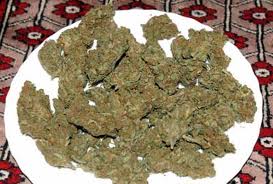
 Resin
Resin

 Powder/ Kief
Powder/ Kief

 Kief Hash
Kief Hash
 Oil/ Ear Wax
Oil/ Ear Wax

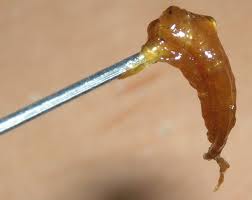 Tincture/ Extract
Tincture/ Extract

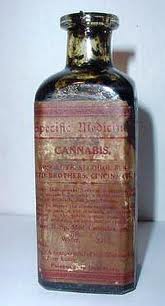 Effects and uses of cannabis
Cannabis is most widely used as a illegal street drug for its relaxing properties. It is usually rolled into a cigarette known as a joint, but can also be smoked in a pipe, brewed as a tea or mixed with food.
The main active ingredient in cannabis is tetrahydrocannabino (THC). One type, skunk, can be particularly potent as it contains two to three time as much THC as other types.
Cannabis acts as a mild sedative, leaving most people feeling relaxed, chilled out or just sleepy. It also:
Has mild hallucinogenic effects, causing a distortion of reality
Makes some people become more animated
Releases inhibitions, making people talkative or giggly
Can cause nausea in some people (despite the fact that cannabis can have an anti-nausea effect), while it quite often makes others feel hungry
Cannabis or its derivatives may also be used as a medical treatment. There is some scientific evidence to suggest it may be useful in a wide range of conditions. But the complex nature of the substances contained within the plant makes it difficult for medical research to establish clearly its safety or efficacy, so its effects are far from proven or well-understood. The active chemicals within cannabis (known as a group as cannabinoids) are gradually being identified and wide-scale trials testing the safety and efficacy of these cannabis extracts (or synthetic forms of them) are currently underway in the UK and elsewhere.
For instance, cannabis appears to be able to help reduce the side effects of chemotherapy treatment, although not more so than other already established medications. The drugs used to treat cancer are among the most powerful, and most toxic, used in medicine. They produce unpleasant side effects, such as days or weeks of vomiting and nausea after each treatment. Some cannabinoids relieve nausea and allow patients to eat and live normally.
Extracts also seem to benefit patients suffering from multiple sclerosis, although most of the benefit seems to be from people feeling more relaxed when taking a cannabinoid or medical derivative of cannabis. Recent research showed no reduction in muscle spasticity.
Claims have also been made for its use in treating:
Migraine
Headaches
Asthma
Strokes
Parkinson's disease
Alzheimer's disease
Alcoholism
Insomnia
Risks of cannabis
There's increasing evidence that cannabis use is linked to a number of health risks. It damages the ability to concentrate, decreases motivation and more than occasional use in teenagers can affect psychological development. Users can become anxious, suspicious and even paranoid. Heavy use increases the risk of serious psychiatric illness.
Users of skunk, a stronger and increasingly more available form of cannabis, are seven times more likely to develop a psychotic illness, such as schizophrenia, than people not using cannabis or using the more traditional forms. Cannabis also interferes with coordination, causing problems with balance, walking and driving.
There are other side effects of the drug, but they vary considerably and are less predictable, partly because cannabis has more than 400 active ingredients. They may include effects on the heart, such as increased heart rate and blood pressure, and damage to fertility. People who smoke cannabis are also exposed to the toxic chemicals in tobacco smoke.
People may become dependent on cannabis and find it difficult to stop using it, experiencing unpleasant withdrawal symptoms if they do stop such as cravings, agitation, mood changes, sleep problems, appetite disturbance and other symptoms.
The debate over the use of cannabis in medicine is highly controversial and emotive. Supporters of the drug claim it has wide-ranging benefits, but opponents say it is a potentially dangerous substance that can actually damage health.
Cannabis and the law
The use of cannabis remains illegal (except for prescribed cannabinoids as described above). It is a Class B drug. As a result, the penalties for getting caught with cannabis, especially on repeated occasions, can be severe.
A report by the House of Lords Science and Technology Committee recommended the use of cannabis for medicinal purposes. However, the British Medical Association (BMA) did not give the report 100 per cent support and believes only cannabinoids - carefully identified chemical derivatives of the cannabis plant - should be used in medicine. TheGovernment says it will not consider legalising cannabis for medical use until clinical trials had been completed.
Advice and support
Occasional users of cannabis may be able to give it up, although they may find it harder to give up the general smoking habit. However, heavier users may need expert help to stop. Talk to your GP or local community drug agency or clinic.
Effects and uses of cannabis
Cannabis is most widely used as a illegal street drug for its relaxing properties. It is usually rolled into a cigarette known as a joint, but can also be smoked in a pipe, brewed as a tea or mixed with food.
The main active ingredient in cannabis is tetrahydrocannabino (THC). One type, skunk, can be particularly potent as it contains two to three time as much THC as other types.
Cannabis acts as a mild sedative, leaving most people feeling relaxed, chilled out or just sleepy. It also:
Has mild hallucinogenic effects, causing a distortion of reality
Makes some people become more animated
Releases inhibitions, making people talkative or giggly
Can cause nausea in some people (despite the fact that cannabis can have an anti-nausea effect), while it quite often makes others feel hungry
Cannabis or its derivatives may also be used as a medical treatment. There is some scientific evidence to suggest it may be useful in a wide range of conditions. But the complex nature of the substances contained within the plant makes it difficult for medical research to establish clearly its safety or efficacy, so its effects are far from proven or well-understood. The active chemicals within cannabis (known as a group as cannabinoids) are gradually being identified and wide-scale trials testing the safety and efficacy of these cannabis extracts (or synthetic forms of them) are currently underway in the UK and elsewhere.
For instance, cannabis appears to be able to help reduce the side effects of chemotherapy treatment, although not more so than other already established medications. The drugs used to treat cancer are among the most powerful, and most toxic, used in medicine. They produce unpleasant side effects, such as days or weeks of vomiting and nausea after each treatment. Some cannabinoids relieve nausea and allow patients to eat and live normally.
Extracts also seem to benefit patients suffering from multiple sclerosis, although most of the benefit seems to be from people feeling more relaxed when taking a cannabinoid or medical derivative of cannabis. Recent research showed no reduction in muscle spasticity.
Claims have also been made for its use in treating:
Migraine
Headaches
Asthma
Strokes
Parkinson's disease
Alzheimer's disease
Alcoholism
Insomnia
Risks of cannabis
There's increasing evidence that cannabis use is linked to a number of health risks. It damages the ability to concentrate, decreases motivation and more than occasional use in teenagers can affect psychological development. Users can become anxious, suspicious and even paranoid. Heavy use increases the risk of serious psychiatric illness.
Users of skunk, a stronger and increasingly more available form of cannabis, are seven times more likely to develop a psychotic illness, such as schizophrenia, than people not using cannabis or using the more traditional forms. Cannabis also interferes with coordination, causing problems with balance, walking and driving.
There are other side effects of the drug, but they vary considerably and are less predictable, partly because cannabis has more than 400 active ingredients. They may include effects on the heart, such as increased heart rate and blood pressure, and damage to fertility. People who smoke cannabis are also exposed to the toxic chemicals in tobacco smoke.
People may become dependent on cannabis and find it difficult to stop using it, experiencing unpleasant withdrawal symptoms if they do stop such as cravings, agitation, mood changes, sleep problems, appetite disturbance and other symptoms.
The debate over the use of cannabis in medicine is highly controversial and emotive. Supporters of the drug claim it has wide-ranging benefits, but opponents say it is a potentially dangerous substance that can actually damage health.
Cannabis and the law
The use of cannabis remains illegal (except for prescribed cannabinoids as described above). It is a Class B drug. As a result, the penalties for getting caught with cannabis, especially on repeated occasions, can be severe.
A report by the House of Lords Science and Technology Committee recommended the use of cannabis for medicinal purposes. However, the British Medical Association (BMA) did not give the report 100 per cent support and believes only cannabinoids - carefully identified chemical derivatives of the cannabis plant - should be used in medicine. TheGovernment says it will not consider legalising cannabis for medical use until clinical trials had been completed.
Advice and support
Occasional users of cannabis may be able to give it up, although they may find it harder to give up the general smoking habit. However, heavier users may need expert help to stop. Talk to your GP or local community drug agency or clinic.